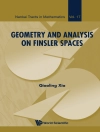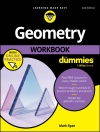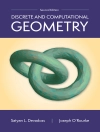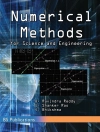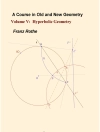This is a new printing, the first inexpensive one, of one of the most honored histories of mathematics of all time. When the last revised edition appeared in 1908, it was hailed by mathematicians and laymen alike, and it remains one of the clearest, most authoritative, and most accurate works in the field. Mathematicians welcomed it as a lucid overview of the development of mathematics down through the centuries. Laymen welcomed it as a work which gave them an opportunity to understand the development of one of the most recondite and difficult of all intellectual endeavors, and the individual contributions of its great men.In this standard work, Dr. Ball treats hundreds of figures and schools that have been instrumental in the development of mathematics from the Egyptians and Phoenicians to such giants of the 19th century as Grassman, Hermite, Galois, Lie, Riemann, and many others who established modern mathematics as we know it today. This semi-biographical approach gives you a real sense of mathematics as a living science, but where Dr. Ball has found that the biographical approach is not sufficient or suited to presenting a mathematical discovery or development, he does not hesitate to depart from his major scheme and treat the mathematics in detail by itself. Thus, while the book is virtually a pocket encyclopedia of the major figures of mathematics and their discoveries, it is also one of the best possible sources for material on such topics as the problems faced by Greek mathematicians, the contributions of the Arab mathematicians, the development of mathematical symbolism, and the invention of the calculus.While some background in mathematics is desirable to follow the reference in some of the later sections, most of the book can be read without any more preparation than high school algebra. As a history of mathematics to browse through, or as a convenient reference work, it has never been excelled.
表中的内容
PREFACETABLE OF CONTENTS CHAPTER I. EGYPTIAN AND PHOENICIAN MATHEMATICS. The history of mathematics begins with that of the Ionian Greeks Greek indebtedness to Egyptians and Phoenicians Knowledge of the science of numbers possessed by the Phoenicians Knowledge of the science of numbers possessed by the Egyptians Knowledge of the science of geometry possessed by Egyptians Note on ignorance of mathematics shewn by the Chinese First Period. Mathematics under Greek Influence. CHAPTER II. THE IONIAN AND PYTHAGOREAN SCHOOLS. Authorities The Ionian School ‘THALES, 640-550 B.C.’ His geometrical discoveries His astronomical teaching Anaximander. Anaximenes. Mamercus. Mandryatus The Pythagorean School ‘PYTHAGORAS, 569-500 B.C.’ The Pythagorean teaching The Pythagorean geometry The Pythagorean theory of numbers Epicharmus. Hippasus. Phiololaus. Archippus. Lysis ‘ARCHYTAS, circ. 400 B.C.’ His solution of the duplication of a cube Theodorus. Timaeus. Bryso Other Greek Mathematical Schools in the Fifth Century B.C. Oenopides of Chios Zeno of Elea. Democritus of Abdera CHAPTER III. THE SCHOOLS OF ATHENS AND CYZICUS. Authorities Mathematical teachers at Athens prior to 420 B.C. Anaxogoras. The Sophists. Hippias (The quadratrix) Antipho Three problems in which these schools were specially interested ‘HIPPOCRATES of Chios, circ. 420 B.C.’ Letters used to describe geometrical diagrams Introduction in geometry of the method of reduction The quadrature of certain lunes The problem of the duplication of the cube ‘Plato, 429-348 B.C.’ Introduction in geometry of the method of analysis Theorem on the duplication of the cube ‘EUDOXUS, 408-355 B.C.’ Theorems on the golden section Introduction of the method of exhaustions Pupils of Plato and Eudoxus ‘MENAECHMUS, circ. 340 B.C.’ Discussion of the conic selections His two solutions of the duplication of the cube Aristaeus. Theaetetus ‘Aristotle, 384-322 B.C.’ Questions on mechanics. Letters used to indicate magnitudes CHAPTER IV. THE FIRST ALEXANDRIAN SCHOOL Authorities Foundation of Alexandria The Third Century before Christ ‘EUCLID, circ. 330-275 B.C.’ Euclid’s Elements The Elements as a text-book of geometry The Elements as a text-book of the theory of numbers Euclid’s other works ‘Aristarchus, circ. 310-250 B.C.’ Method of determining the distance of the sun Conon. Dositheus. Zeuxippus. Nicoteles ‘ARCHIMEDES, 287-212 B.C.’ His works on plane geometry His works on geometry of three dimensions ‘His two papers on arithmetic, and the ‘cattle problem’ His works on the statistics of solids and fluids His astronomy The principles of geometry and that of Archimedes ‘APOLLONIUS, circ. 260-200 B.C.’ His conic sections His other works His solution of the duplication of a cube Contrast between his geometry and that of Archimedes ‘Erathosthenes, 275-194 B.C.’ The Sieve of Eratosthenes The Second Century before Christ ‘Hypsicles (Euclid, book XIV). Nicomedes. Diocles’ Perseus. Zejodorus ‘HIPPARCHUS, circ. 130 B.C.’ Foundation of scientific astronomy Foundation of trigonometry ‘HERO of Alexandria, circ. 125 B.C.’ Foundation of scientific engineering and of land-surveying Area of a triangle determined in terms of its sides Features of Hero’s works The First Century before Christ Theodosius Dionysodorus End of the First Alexandrian School Egypt constituted a Roman province CHAPTER V. THE SECOND ALEXANDRIAN SCHOOL Authorities The First Century after Christ Serenus. Menelaus Nicomachus Introduction of the arithmetic current in medieval Europe The Second Century after Christ Theon of Smyran. Thymaridas ‘PTOLEMY, died in 168’ The Almagest Ptolemy’s astronomy Ptolemy’s geometry The Third Century after Christ ‘Pappus, circ. 280’ ‘The Suagwg?, a synopsis of Greek mathematics’ The Fourth Century after Christ Metrodorus. Elementary problems in arithmetic and algebra Three stages in the development of algebra ‘DIOPHANTUS, circ. 320 (?)’ Introduction of syncopated algebra in his Arithmetic ‘The notation, methods, and subject-matter of the work’ His Porisms Subsequent neglect of his discoveries Iamblichus Theon of Alexandria. Hypatia Hostility of the Eastern Church to Greek science The Athenian School (in the Fifth Century) ‘Proclus, 412-485. Damascius. Eutocius’ Roman Mathematics Nature and extent of the mathematics read at Rome Contrast between the conditions at Rome and at Alexandria End of the Second Alexandrian School ‘The capture of Alexandria, and end of the Alexandrian Schools’ CHAPTER VI. THE BYZANTINE SCHOOL. Preservation of works of the great Greek Mathematicians Hero of Constantinople. Psellus. Planudes. Barlaam. Argyrus Nicholas Rhabdas. Pachymeres. Moschopulus (Magic Squares) ‘Capture of Constantinople, and dispersal of Greek Mathematicians’ CHAPTER VII. SYSTEMS OF NUMERATION AND PRIMITIVE ARITHMETIC. Authorities Methods of counting and indicating numbers amoung primitive races Use of the abacus or swan-pan for practical calculation Methods of representing nu The Lilavati or arithmetic ; decimal numeration used The Bija Ganita or algebra Development of Mathematics in Arabia ‘ALKARISMI or AL-KHWARIZMI, circ. 830’ His Al-gebr we ‘l mukabala His solution of a quadratic equation Introduction of Arabic or Indian system of numeration ‘TABIT IBN KORRA, 836-901 ; solution of a cubic equation’ Alkayami. Alkarki. Development of algebra Albategni. Albuzjani. Development of trigonometry Alhazen. Abd-al-gehl. Development of geometry Characteristics of the Arabian School CHAPTER X. INTRODUCTION OF ARABIAN WORKS INTO EUROPE. The Eleventh Century Moorish Teachers. Geber ibn Aphla. Arzachel The Twelfth Century Adelhard of Bath Ben-Ezra. Gerad. John Hispalensis The Thirteenth Century ‘LEONARDO OF PISA, circ. 1175-1230’ ‘The Liber Abaci, 1202’ The introduction of the Arabic numerals into commerce The introduction of the Arabic numerals into science The mathematic tournament ‘Frederick II., 1194-1250’ ‘JORDANUS, circ. 1220’ His De Numeris Datis ; syncopated algebra Holywood ‘ROGER BACON, 1214-1294’ Campanus The Fourteenth Century Bradwardine Oresmus The reform of the university curriculum The Fifteenth Century Beldomandi CHAPTER XI. THE DEVELOPMENT OF ARITHMETIC. Authorities The Boethian arithmetic Algorism or modern arithmetic The Arabic (or Indian) symbols : history of ‘Introduction into Europe by science, commerce, and calendars’ Improvements introduced in algoristic arithmetic (I) Simplification of the fundemental processe (ii) Introduction of signs for addition and subtraction (iii) ‘Invention of logarithms, 1614’ (iv) ‘Use of decimals, 1619’CHAPTER XII. THE MATHEMATICS OF THE RENAISSANCE. Authorities Effect of invention of printing. The renaissance Development of Syncopated Algebra and Trigonometry ‘REGIOMONTANUS, 1436-1476’ His De Triangulis (printed in 1496) ‘Purbach, 1423-1461. Cusa, 1401-1464. Chuquet, circ. 1484’ Introduction and origin of symbols + and – ‘Pacioli or Lucas di Burgo, circ. 1500’ ‘His arithmetic and geometry, 1494’ ‘Leonardo da Vinci, 1452-1519’ ‘Dürer, 1471-1528. Copernicus, 1473-1543’ ‘Record, 1510-1588 ; introduction of symbol for equality’ ‘Rudolff, circ. 1525. Riese, 1489-1559’ ‘STIFEL, 1486-1567’ ‘His Arithmetica Integra, 1544’ ‘TARTAGLIA, 1500-1559’ ‘His solution of a cubic equation, 1535’ ‘His arithmetic, 1556-1560’ ‘CARDAN, 1501-1576’ ‘Hid Ars Magna, 1545 ; the third work printed on algebra’ His solution of a cubic equation ‘Ferrari, 1522-1565 ; solution of a biquadratic equation’ ‘Rheticus, 1514-1576. Maurolycus. Borrel. Xylander’ ‘Commandino. Peletier. Romanus. Pitiscus. Ramus, 1515-1572’ ‘Bombelli, circ. 1570’ Development of Symbolic Algebra ‘VIETA, 1540-1603’ ‘The In Artem ; introduction of symbolic algebra, 1591’ Vieta’s other works ‘Girard, 1590-1633 ; development of trigonometry and algebra’ ‘NAPIER, 1550-1617 ; development of trigonometry and algebra’ ‘Briggs, 1556-1631 ; calculations of tables of logarithms’ ‘HARRIOT, 1560-1621 ; development of analysis in algebra’ ‘Oughtred, 1574-1660’ The Origin of the more Common Symbols in Algebra CHAPTER XIII. THE CLOSE OF THE RENAISSANCE. Authorities Development of Mechanics and Experimental Methods ‘STEVINUS, 1548-1620’ ‘Commencement of the modern treatment of statistics, 1586’ ‘GALILEO, 1564-1642’ Commencement of the science of dynamics Galileo’s astronomy ‘Francis Bacon, 1561-1626’ Revival of Interest in Pure Geometry ‘KEPLER, 1571-1630’ ‘His Paralipomena, 1604 ; principle of continuity’ ‘His Stereometria, 1615 ; use of infinitesimals’ ‘Kepler’s laws of planetary motion, 1609 and 1619’ ‘Desargues, 1593-1662’ His Brouillon project ; use of projective geometry Mathematical Knowledge at the Close of the Renaissance Third Period. Modern Mathematics CHAPTER XIV. THE HISTORY OF MODERN MATHEMATICS. Treatment of the subject Invention of analytical geometry and the method of indivisibles Invention of the calculus Development of mechanics Application of mathematics to physics Recent development of pure mathematics CHAPTER XV. HISTORY OF MATHEMATICS FROM DESCARTES TO HUYGENS. Authorities ‘DESCARTES, 1596-1650’ His views on philosophy ‘His invention of analytical geometry, 1637’ ‘His algebra, optics, and theory of vortices’ ‘CAVALIERI, 1598-1647’ The method of indivisibles ‘PASCAL, 1623-1662’ His geometrical conics The arthmetical triangle ‘Foundation of the theory of probabilities, 1654’ His discussion of the cycloid ‘WALLIS, 1616-1703’ ‘The Arithmetica Infinitorum, 1656’ Law of indices in algebra Use of series in quadratures ‘Earliest rectification of curves, 1657’ Wallis’s algebra ‘FERMAT, 1601-1665’ His investigation on the theory of numbers His use in geometry of analysis and of infinitesimals ‘Foundation of the theory of probabilities, 1654’ ‘HUYGENS, 1629-1695’ ‘The Horologium Oscillatorium, 1673’ The undulatory theory of light Other Mathematicians of this Time Bachet Marsenne ; theorem on primes and perfect numbers Roberval. Van Schooten. Saint-Vincent Torricelli. Hudde. Frénicle De Laloubère. Mercator. Barrow ; the differential triangle Brouncker ; continued fractions James Gregory ; distinction between convergent and divergent series Sir Christopher Wren Hooke. Collins Pell. Sluze. Viviani Tschirnhausen. De la Hire. Roemer. Rolle.CHAPTER XVI. THE LIFE AND WORKS OF NEWTON. Authorities Newton’s school and undergraduate life ‘Investigations in 1665-1666 on fluxions, optics, and gravitation’ ‘His views on gravitation, 1666’ Researches in 1667-1669 ‘Elected Lucasian professor, 1669’ ‘Optical lectures and discoveries, 1669-1671’ ‘Emission theory of light, 1675’ ‘The Leibnitz Letters, 1676’ ‘Discoveries and lectures on algebra, 1673-1683’ ‘Discoveries and lectures on gravitation, 1684’ ‘The Principia, 1685-1686’ The subject-matter of the Principia Publication of the Principia Investigations and work from 1686 to 1696 ‘Appointment at the Mint, and removal to London, 1696’ ‘Publication of the Optics, 1704’ Appendix on classification of cubic curves Appendix on quadrature by The controversy as to the






